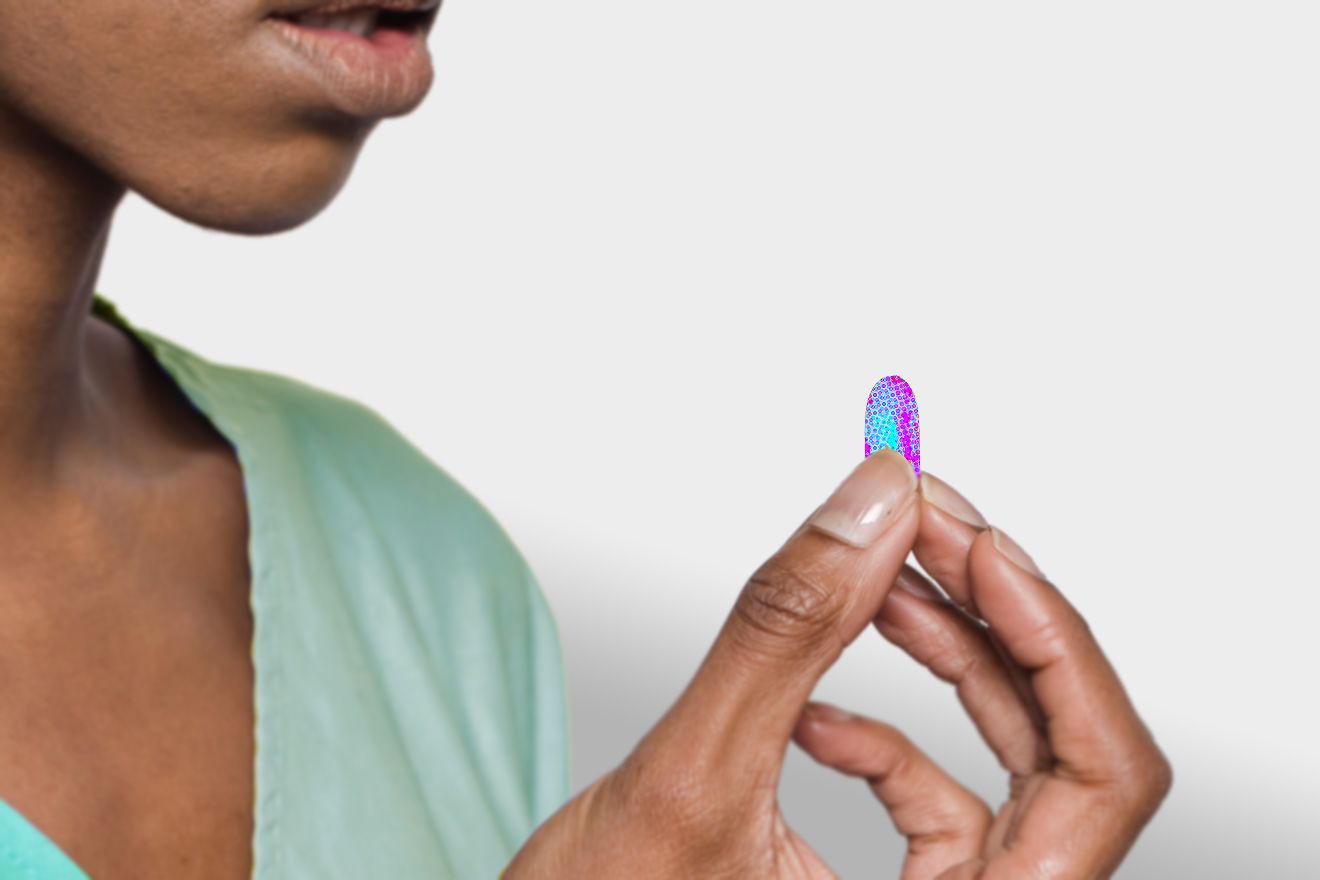Many therapeutic substances carry the risk of dependency and addiction. Can psychedelics be abused? Let’s discuss the nuances of substance abuse in psychedelic medicine, and how to prevent it in your patients.
The potential for abuse was a cornerstone of getting psychedelics DEA scheduled in 1970. Proponents of the scheduling argued that psychedelics used outside the context of research and therapy were “hazardous.”[1]
Modern researchers and advocates of psychedelic medicine now look to psychedelic scheduling as a blatant attempt to sideline the cultures it came to represent. Legislative leaders wanted to criminalize behaviors associated with “hippie” countercultures. Perhaps they even feared the societal effects of widespread psychedelic integration.
Creating this fear of psychedelic abuse helped the DEA criminalize psychedelics. But does the claim of psychedelic abuse hold up to current science? What risks should clinicians be aware of before administering psychedelic therapy to patients?
Follow your Curiosity
Sign up to receive our free psychedelic courses, 45 page eBook, and special offers delivered to your inbox.Defining Substance Abuse Within Psychedelic Medicine
Many other medical substances can be abused if used outside their prescribed setting. ADHD medications and prescription opioids are examples of substances that are appropriate and necessary in some situations. Yet they each carry a high risk for abuse and dependency when used outside the prescription parameters.
As psychedelic medicine defines itself, we also have to start creating parameters around what’s therapeutic and what’s abuse. Most recent ICD codes include “hallucinogenic abuse, uncomplicated” and “mild use,” but it’s hard to define what psychedelic abuse is in broad strokes [1, 2].
One way to do this is to define any use outside the therapy setting as “abusive.” But under this reasoning, are folks who have positive psychedelic experiences without supervision being “substance abusers”? This definition can feel unnecessarily restrictive. But since these are currently controlled substances with high penalties, it may be where we’re headed legislatively
By definition, substance abuse means negative consequences to a person’s social, occupational, and interpersonal wellbeing. The legal risks of possessing Schedule 1 substances are significant, and Psychedelic.Support does not promote illicit substance use.
Another way to define abuse is to link it with addiction and dependency. We typically think of abuse and addiction as parallel problems in substance use. Chemical and physical dependency are foundations of our conception of pathological drug use.
Most psychedelics are not physically addictive, like psilocybin, LSD, and mescaline [3]. They won’t cause physical withdrawal symptoms, and there is little evidence of people dying from an overdose [4].
But this isn’t true for all psychedelics. Ketamine, for instance, has a high potential for addiction and abuse outside of medical supervision. It’s often mixed with ecstasy or cocaine and referred to as “Special-K.” This mixture is a dangerous street drug that has caused a rising number of overdose deaths over the last three decades [5]. Similarly, fentanyl contamination is a significant and growing issue.
MDMA, contained in Ecstasy or Molly, is another substance used illicitly in parties and raves. While less dangerous than other substances like heroin, it also carries a risk for overdose, particularly in situations where someone can become overheated and dehydrated [6]. Molly is said to have low to moderate abuse liability, but it does have psychological withdrawal symptoms that can make independent use riskier.
Across psychedelic medicines, our definition of abuse may be linked to the harm that results. Habitual, dependent behaviors around psychedelics are not constructive for patients. Neither are the potentially dangerous scenarios that can arise from contaminated drug supplies or high risk environments.
Specific psychedelics like ketamine and MDMA may need certain precautions to prevent abuse. But what about the others that don’t cause overdose or addiction? Let’s talk about what abuse may look like for specific psychedelics.
Can Psychedelics Be Abused?
Yes. People can form dependencies on psychedelics. In some cases, psychedelics can have overdose or toxicity potential. Their risk of abuse is still low compared with other medical substances, but still not nonexistent.
People can abuse psychedelics as an escape from life and as a way to dull their senses. Unsupervised use can become dangerous as people under the influence often have reduced capacity for decision-making. Psychedelics can also exacerbate psychotic disorders and may be habit-forming for people with a history of addiction.
Microdosing, a relatively new phenomenon of taking very low doses of psychedelic substances multiple times per week, could possibly lead to psychological dependence. It is currently unknown if there are adverse health effects of microdosing because psychedelics haven’t been tested in repeated dose models over time.
We still don’t have a lot of data on the long-term effects of psychedelic abuse. Since most of their usage is illicit, we can’t track outcomes among people who use psychedelics. It’s difficult to define the average psychedelic user when they’ve only recently been decriminalized and trending among populations who before had abstained [7].
We hope decriminalization and expanding access will make it easier to study psychedelic misuse and its long-term effects.
What Psychedelics Have the Greatest Risk for Abuse?
Ketamine, now available to patients in infusions and therapy, may pose the highest risk for abuse among psychedelics. Its short-acting, hallucinogenic effects make it a rapid antidepressant in treatment and an attractive party drug. It’s been called the “heroin of psychedelics” [8].
We don’t yet know whether ketamine infusions contribute to abuse and addiction. Low-dose infusions of ketamine have not been shown to cause dependency but can have addictive properties [9].
One potential problem in ketamine infusion centers is the lack of patient tracking. If a person wanted to, they could go to several treatment centers to receive ketamine infusions multiple times. With the rise of mail-order ketamine and very little medical oversight, the heightened risk for dependence and misuse seems obvious.
We don’t yet know if this is a real risk due to lack of data, but it is possible under our current systems. Close supervision and patient education are critical to preventing abuse in ketamine therapy.
MDMA is on the hopeful fast track for commercialization and may carry the risk for abuse outside of the medical setting. People who take MDMA without supervision may act dangerously or consume an adulterated substance. One of the most common reasons people die while taking MDMA is not overdose but due to risky behavior while on the drug [11].
Close supervision and education in therapy is one way to prevent abuse. Current commercialization strategies aim to include two supervisors in each active drug session and at least one introductory session to establish expectations for the patient. Close supervision can help keep our patients safe and ensure good standards of care.
Is it possible to overdose on psychedelics?
Yes, but toxicity is more common than overdose. Dosage is strictly controlled in the therapy setting, so toxicity and overdose have not been reported in the completed trials. Still, it’s essential to understand toxicity as psychedelic clinicians. Here are some clinical profiles of toxicity and overdose from different psychedelics:
- Ketamine toxicity causes respiratory depression, hypotension, bradycardia, stupor, and comas at high doses or when consumed with other substances. Frequent ketamine use can result in bladder and urinary tract damage. Kidney injury, liver failure, cognition problems, accidents, and rhabdomyolysis are also linked to ketamine. But overdose in the therapy setting is relatively uncommon, and usually only treated with supportive therapy [10].
- MDMA toxicity may present as anxiety, hyperactivity, hyperthermia, and even brief psychotic episodes. These typically resolve when the drug wears off, proceeded by a period of depression and fatigue. Overdosing on MDMA is rare but not impossible [11,12].
- LSD can cause bleeding, hyperthermia, and coma after toxic doses of intranasal forms. LSD toxicity is very rare, but serious [13].
- Psilocybin toxicity is also very rare but negative psychological experiences can happen, typically about 30 minutes after ingestion. Patients may have tachycardia, hypertension, nausea, anxiety, and confusion. These symptoms are generally resolved independently without medical attention, but they can disturb users [14]. Misidentification of mushrooms or bacteria contaminated mushrooms can lead to severe adverse effects.
How to Prevent Psychedelics Abuse
As clinicians, it’s our duty to protect patients from harm to the best of our abilities. Understanding the risks ourselves and communicating those risks are the first steps to harm reduction in psychedelic medicine.
Another component of protecting patients is evaluating their readiness for psychedelic therapy. While some psychedelics have the potential to help with substance addiction, it’s vital that patients aren’t simply moving dependency from one substance to another.
Close supervision during the psychedelic session is paramount to harm reduction and abuse prevention. Guiding patients to feel safe can prevent them from seeking psychedelics outside of therapy.
Access to psychedelic therapy is paramount to preventing abuse. If patients are able to access psychedelics in a way that is safe, effective, and inexpensive, we could see less illicit use of these substances.
Protecting our patients is a priority as psychedelic clinicians. Interested in more psychedelic harm reduction resources? Check out our free courses.
Sources:
- Bowers M, Chipman A, Schwartz A, Dann OT. Dynamics of Psychedelic Drug Abuse: A Clinical Study. Arch Gen Psychiatry. 1967;16(5):560–566. doi:10.1001/archpsyc.1967.01730230044006
- 2022 ICD-10-CM diagnosis code F16.10. 10. (n.d.). Retrieved March 22, 2022, from https://www.icd10data.com/ICD10CM/Codes/F01-F99/F10-F19/F16-/F16.10
- Nichols D. E. (2016). Psychedelics. Pharmacological reviews, 68(2), 264–355. https://doi.org/10.1124/pr.115.011478
- Centers for Disease Control and Prevention. (2021, November 18). Other drugs. Centers for Disease Control and Prevention. Retrieved March 22, 2022, from https://www.cdc.gov/drugoverdose/deaths/other-drugs.html
- Corkery JM, Hung W-C, Claridge H, Goodair C, Copeland CS, Schifano F. Recreational ketamine-related deaths notified to the National Programme on Substance Abuse Deaths, England, 1997–2019. Journal of Psychopharmacology. 2021;35(11):1324-1348. doi:10.1177/02698811211021588
- Ramcharan S, Meenhorst PL, Otten JM, Koks CH, de Boer D, Maes RA, Beijnen JH. Survival after massive ecstasy overdose. J Toxicol Clin Toxicol. 1998;36(7):727-31. doi: 10.3109/15563659809162623. PMID: 9865243.
- Johnstad PG. Who is the typical psychedelics user? Methodological challenges for research in psychedelics use and its consequences. Nordic Studies on Alcohol and Drugs. 2021;38(1):35-49. doi:10.1177/1455072520963787
- Walsh, Z., Mollaahmetoglu, O., Rootman, J., Golsof, S., Keeler, J., Marsh, B., . . . Morgan, C. (2022). Ketamine for the treatment of mental health and substance use disorders: Comprehensive systematic review. BJPsych Open, 8(1), E19. doi:10.1192/bjo.2021.1061
- Strong, C. E., & Kabbaj, M. (2018). On the safety of repeated ketamine infusions for the treatment of depression: Effects of sex and developmental periods. Neurobiology of stress, 9, 166–175. https://doi.org/10.1016/j.ynstr.2018.09.001
- Orhurhu VJ, Vashisht R, Claus LE, et al. Ketamine Toxicity. [Updated 2022 Feb 7]. In: StatPearls [Internet]. Treasure Island (FL): StatPearls Publishing; 2022 Jan-. Available from: https://www.ncbi.nlm.nih.gov/books/NBK541087/
- Kalant H. (2001). The pharmacology and toxicology of “ecstasy” (MDMA) and related drugs. CMAJ : Canadian Medical Association journal = journal de l’Association medicale canadienne, 165(7), 917–928.
- Ramcharan S, Meenhorst PL, Otten JM, Koks CH, de Boer D, Maes RA, Beijnen JH. Survival after massive ecstasy overdose. J Toxicol Clin Toxicol. 1998;36(7):727-31. doi: 10.3109/15563659809162623. PMID: 9865243.
- Klock, J. C., Boerner, U., & Becker, C. E. (1974). Coma, hyperthermia and bleeding associated with massive LSD overdose. A report of eight cases. The Western journal of medicine, 120(3), 183–188.
- Jo, W. S., Hossain, M. A., & Park, S. C. (2014). Toxicological profiles of poisonous, edible, and medicinal mushrooms. Mycobiology, 42(3), 215–220. https://doi.org/10.5941/MYCO.2014.42.3.215






